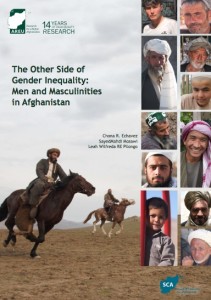AFGHANISTAN RESEARCH AND EVALUATION UNIT
Research for a Better Afghanistan
PUBLICATION ANNOUNCEMENT
Date: 01.21.2016
Exclusion of “men and boys” from mainstream research and policy formulation on gender in Afghanistan has significantly contributed to persisting inequalities in practice, including unequal access to education, healthcare and employment.
A new research conducted by Afghanistan Research and Evaluation Unit (AREU), with financial contribution and in close coordination with Swedish Committee for Afghanistan (SCA), has aimed at an in-depth understanding of various notions of being an Afghan man and its contribution to gender inequality in four provinces of Afghanistan.
This paper argues that that even though masculinity is a significant gender studies issue, the term “gender” for Afghans is connected almost exclusively with women, leading to men’s resistance towards messages interpreted solely as “women’s issues”.
“Policies still fail to accommodate the emerging research that points toward the advantages of including men and boys in programs to promote gender equality and prevent gender-based violence”, the paper says.
This research has used a multi-method approach employed both quantitative and qualitative techniques to assess four different regions that manifested degrees of both conservatism and openness regarding gender issues and were satisfactorily secure, namely, Nangarhar, Takhar, Bamyan, and Kabul, both in rural and urban areas.
The aim for this research is to explain how men’s attitudes, perceptions and actions are influenced by socio-culturally constructed ideas of manhood, and how these factors further affect the interaction between men and women in Afghan communities.
The paper draws on perceptions of adult males and females and strives to address the issues connecting the notions of “manhood” to the violence against women, as well as the degree in which men tend to claim the “control” over women’s life and their decisions.
It is expected that the results of this study will contribute to a greater understanding of Afghan masculinities and how they influence gender inequality in Afghan communities.
“The Other Side of Gender Inequality: Men and Masculinities in Afghanistan” is available for download.


